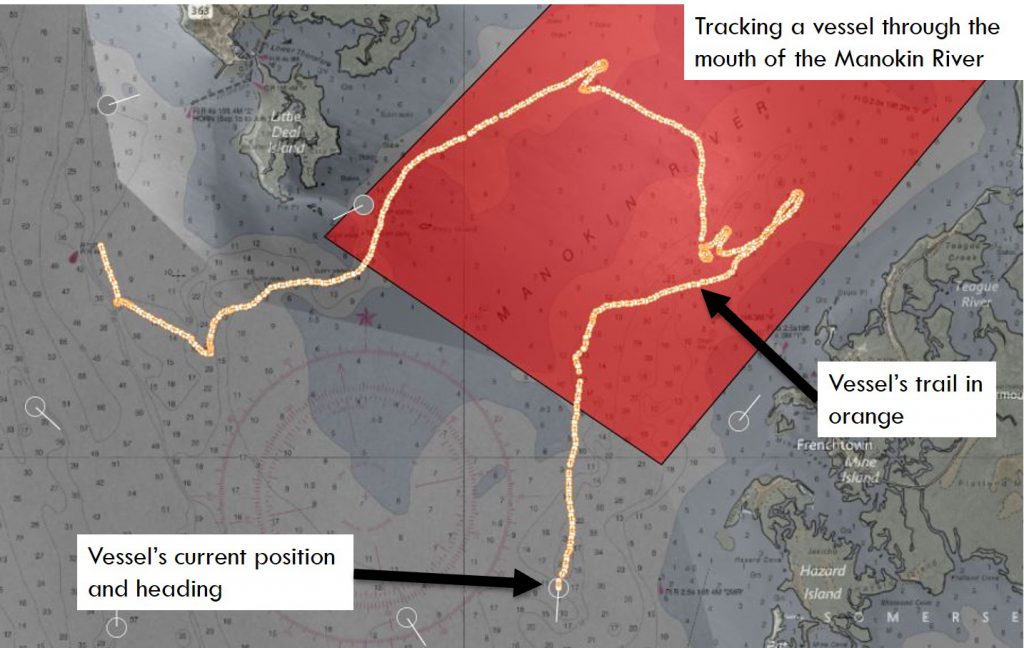![]() Is it possible for police officers to be in two places at the same time? Although the Maryland Natural Resources Police is at a near-record size force and operates more than 100 patrol boats, it can be challenging to keep an eye on a large body of water such as the Chesapeake Bay. In inclement weather and low visibility areas, officers may have trouble pinpointing boating activity. However, there is a tool that gives patrol officers a clear view of boat traffic from the Port of Baltimore to the Potomac River.
Is it possible for police officers to be in two places at the same time? Although the Maryland Natural Resources Police is at a near-record size force and operates more than 100 patrol boats, it can be challenging to keep an eye on a large body of water such as the Chesapeake Bay. In inclement weather and low visibility areas, officers may have trouble pinpointing boating activity. However, there is a tool that gives patrol officers a clear view of boat traffic from the Port of Baltimore to the Potomac River.
The Marine Law Enforcement Information Network (MLEIN), is a mobile command center consisting of radar monitoring, video surveillance, and advanced software that allows the officers to keep a very close watch on what’s happening on the water. With MLEIN, officers can view movement of boats and other activity while in a completely different area.
How It Works Every NRP officer has access to MLEIN through their laptop computers. The command center for the MLEIN network is located in Annapolis near the Bay Bridge, but the cameras and radar units are all over the bay. The system “draws” an electronic barrier around sensitive areas, such as oyster sanctuaries. When the barrier is crossed by a vessel entering the region, NRP can monitor it in real-time from their computers using long-range cameras. The software also allows operators to monitor moving vessels and disseminate information regarding illegal boating or fishing activity, search and rescue missions, and potential homeland security situations. Officers heavily rely on MLEIN to be their eyes on the bay.
How It’s Used Illegal harvesting of fish and game, or poaching, is a threat to Maryland’s natural resources. One of MLEIN’s most notable cases involved a waterman illegally harvesting oysters from a state sanctuary in Somerset County. Officers were on patrol in Tangier Sound, monitoring the radar capability of MLEIN, when they noticed a vessel heading toward the sanctuary. Due to heavy fog in the area, officers could position themselves near the sanctuary without being detected.
When the the officers observed the suspect vessel enter the sanctuary on MLEIN, they intercepted the vessel as the waterman was actively engaged in dredging for oysters, and charged the individual for illegal harvesting.
In addition to protecting our resources, MLEIN can also save lives. The system has helped officers locate boats in distress or in need of medical assistance, helping assure a timely response.
MLEIN doesn’t sleep. Marylanders can rest assured that someone has an eye on the bay at all times, 24 hours a day, 7 days a week.
dnr.maryland.gov/nrp
Lauren Moses is a public information officer with the Natural Resources Police. Article appears in Vol. 23, No. 4 of the Maryland Natural Resource magazine, winter 2021.

